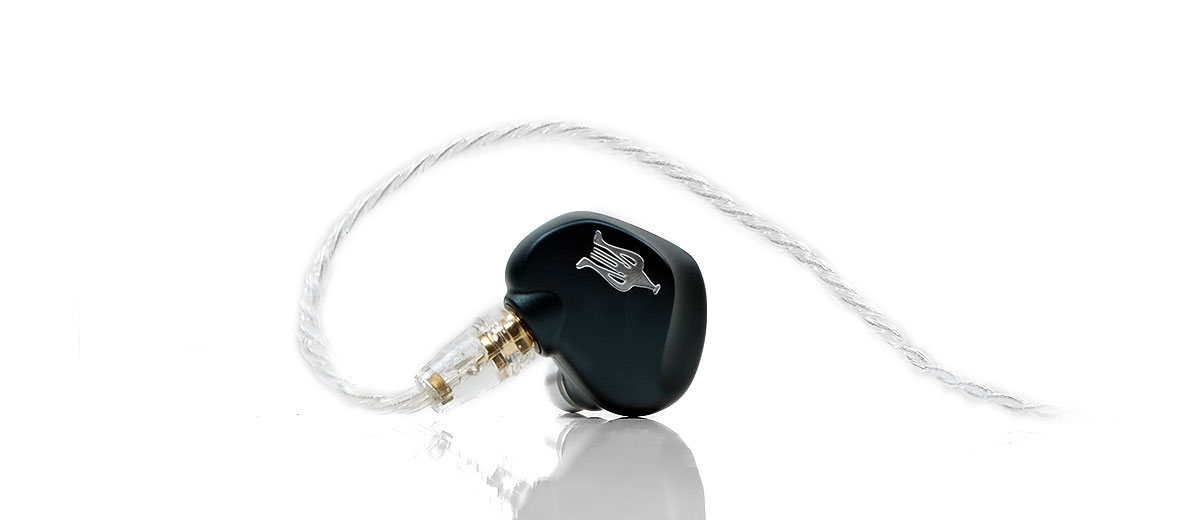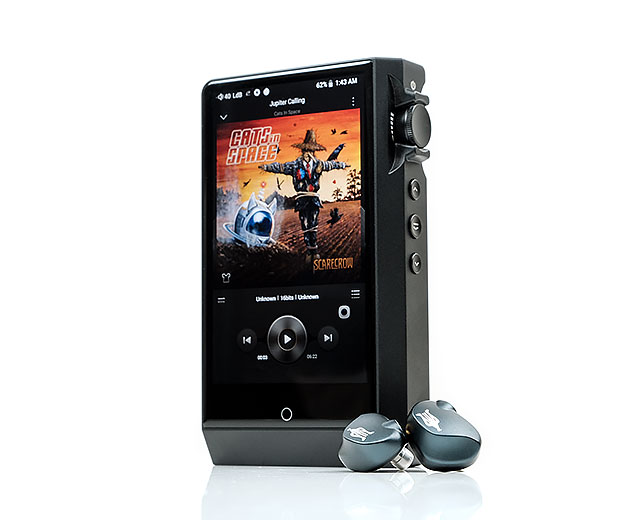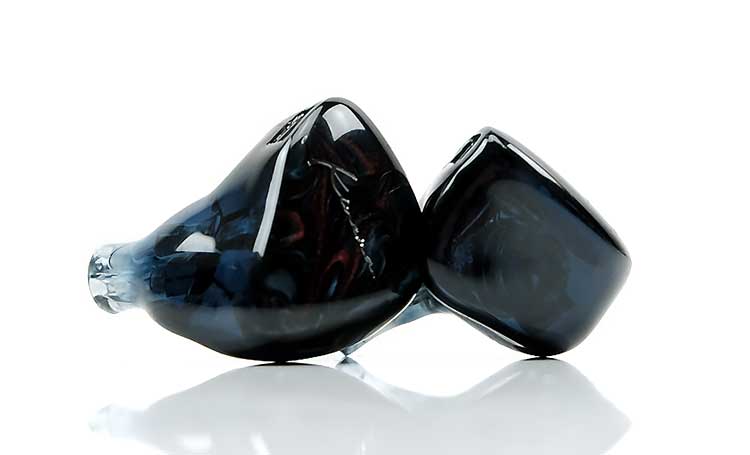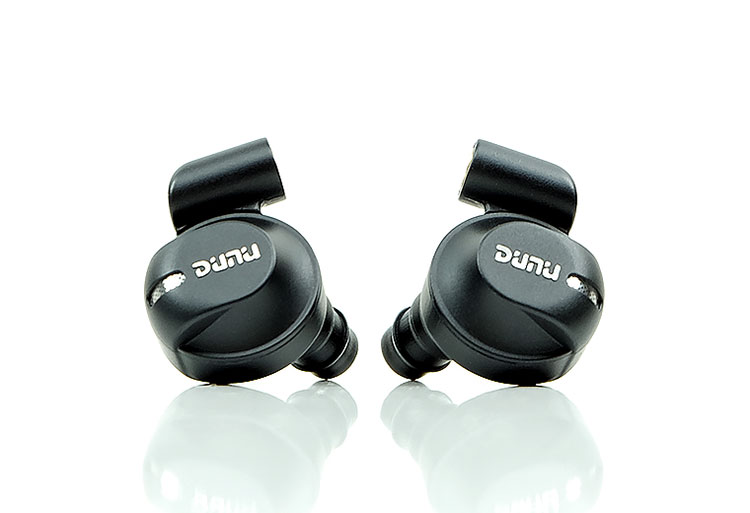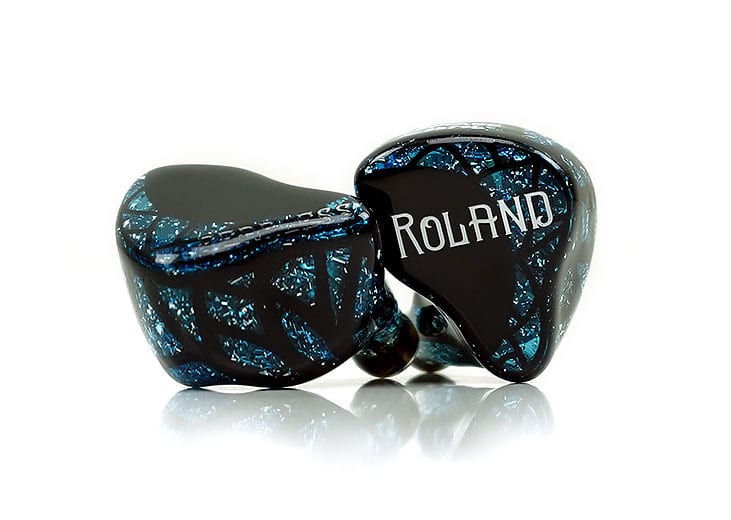Sound Impressions
Summary
The Rai Penta is a controlled tuning and by that I mean it doesn’t sound overly hybrid. The mix of different drivers, the contrasting timbres, speed, and decay are all blended to an excellent level to deliver a very balanced sound signature.
This is more about listening than anything else. If there is a focus then it is on delivering a vocal performance that is soothing but natural rather than overly wet and lush. I remember saying that about the Empyrean, only at a more resolving and dynamic performance benchmark.
The intent is similar here but on a slightly smaller scale. So that means, a solid bass but not overpowering, mids to the fore somewhat stretching the stage, and just enough treble to bring out definition without a loss in texture for percussion.
Like the Empyrean, the top-end of the Rai Penta is not as extended or as peppy as other brighter competitors. You will not hear any peakiness but just enough odd harmonic performance to ensure the final signature doesn’t lack clarity or air.
Personally, I adore the harmonic balance and timbre of the Rai Penta throughout. It sounds very natural without too much warmth or sharpness. There is some contrast but not enough to suck out that rich sustain in-between.
Staging
The Rai Penta depth is good but not earth-shattering and does lack that sub-bass dynamism and punch of other competitors. The fundamental is steady, the instruments do not lack weight but they blend in rather than leap out.
It does mean, however, that the focus drifts more to the mids and upper-mids in particular which have more presence. Female vocals, in particular, are to the fore stretching the stage from front to back.
Instruments are not exactly dipped and far behind. Lower-mid presence is actually quite good overall and modern hard rock and altcore metal, in particular, shines with the Rai Penta’s tuning.
Bass
Those looking for a hefty dynamic driver punch and slam will not find it in the Rai Penta tuning. However, you will get a favorable dynamic driver timbre with some good extension so it certainly does not sound lacking.
There is some bias in the Rai Penta low-end mid-bass tuning with just enough lift to inject some warmth into the performance. That means lower pitching instruments have a nice fullness and wet timbre to them but others might feel it lacks pure power and punch.
This is generally a tone I prefer for guitar work, especially Les Paul chord timbre which I hate the sound of when it’s thinned out by more analytical monitors.
Mids
This is where I believe the Rai Penta is at its strongest. There is but a small dip in the lower mids for clarity and a forward-sounding upper-midrange.
I would say the midrange of the Rai Penta is at its most forward around 1-3k giving most vocals a fair amount of push and stretching the stage deeper with instruments just slightly tucked in behind.
However, as mentioned, the lower-mids do not sound recessed or lacking in presence. There is a cute mix of clarity, natural overtones, and body that make it sound really good with rock guitar work.
Male vocals sound slightly north of neutral but not overly pushed, particularly if they are chesty vocals or registering below 1k. If you have heard the DK-4001 vocal positioning it is somewhat similar to the Rai Penta but with a bit more odd-harmonic flavor so it sounds cleaner.
Female vocals or higher pitching are further forward with more presence but still retain a lovely smooth, natural overtone, even with the most difficult emo-style vocals.
Performances such as Grime’s vocals from Butterfly on her Art Angels 2015 album which are airy and ethereal at the best of times have a lovely weight and clarity to them with the Rai Penta.
Higher-tuned BA timbre is so hard to get right at times but the balance is really nice here and highly listenable as a result.
Treble
There is not a huge amount of treble presence with a slight focus on the 7-8k range that injects a bit of odd-harmonic presence into the mids timbre. Staging-wise, the Rai Penta sounds extended and reasonably tall with a midrange that varies depending on how much instrumental imaging sits on that 1-3k bump.
You can argue the Rai Penta has a fairly polite treble performance but I actually really like its harmonic balance and weight already. Percussion is not muffled but it does sound natural and with excellent texture.
Synergy
Efficiency
The Rai Penta is rated at 20Ω and 110dB SPL which I rate as a sort of a sweet spot between being easy to drive and overly sensitive to analog amplification circuits.
DAPs with higher noise floors such as the FiiO M11 sound just fine with the Rai Penta without a pervasive hiss. You do get the odd usual pop and click for play and pause but that’s pretty normal on a lot of DAPs.
With the majority of other DAPs used, such as the Cayin N6ii/E01 and A01 and the DX220/AMP1 MKII the Rai Penta was easy to drive and impeccably behaved for hiss. Just a shade higher on the HiBy R6 Pro but then I expected that. It is still low enough not to be distracting.
Pairings
If I have one takeaway from the pairing analysis is that the source signature is not a huge influence but rather the technical capability to resolve and deliver a good level of dynamic range.
The Rai Penta is easy for current and not the hardest to drive but if you pair it with relatively weak or neutral DAPs with a more limited dynamic range then the Rai Penta can sound ‘samey’.
And by that I mean it lacks a bit of punch and can seem like the presentation is maybe shallow and lacking in separation which I know should not be the case. Smartphones can do that, at least my smartphones such as the Samsung Note 9 which delivered a slightly brittle feel to the Rai Penta mids and highs.
This improves somewhat with FiiO’s M11 but if you want a more linear delivery with better separation then the iBasso DX220 is the more resolving of the two and again, separation is key here.
Where I felt it was more at home was the E01 motherboard paired with the Cayin N6ii. Now, this surprised me because my aural memory was saying skip it before I started the review as I often feel the A01 motherboard to be similarly reserved in its bass punch.
Not so the Class AB of the E01 which not only added a little bit more heft to the Rai Penta low end but brought in a much blacker background and top-notch instrumental separation.
Vocals were creamy also with this pairing, both male and female. Not lush I might add, clean and clear but with some excellent texture. This is a pairing with ‘drive’.
Select Comparisons
Kinera Nanna
$899
Technical
We have yet to do a full review on this one, you can check our initial impressions here. That being said, we have poked and prodded at it enough to give you a comparison with the Rai Penta.
The Nanna is also a hybrid but introduces electrostatic Sonion drivers as well as BA and dynamic. It has a configuration of a single custom 7mm dynamic driver, one full-range balanced armature driver, and a dual electrostatic Sonion tweeter.
This is compared to the Rai Penta’s single and larger 10mm dynamic for the lows and 4 BA drivers for the mids and highs.
Both are universal, however, the Nanna takes the acrylic route and the Rai Penta takes the machined CNC aluminum path. This is one of those rare times that the CNC of a monitor looks better than the flashy color design of an acrylic.
Granted, the Nanna is lighter and bolder in its visual. However, the solid and complex contours of the Rai Penta just look a level up. If you want isolation, however, the Nanna does seal the better of the two.
Performance
The Nanna is rated at a relatively high 60Ω and 110dB SPL compared to the Rai Penta’s relatively easier 20Ω and similar 110dB SPL. Current is not the issue here but rather the Sonion electrostatic drivers inside the Nanna which are much harder to drive.
That pretty much bore out in real-world testing with our two DAPs, the FiiO M11 and the Cayin N6ii with the E01 Motherboard. In low-gain, the current gap between these two was quite big at about 20-25 steps volume on the Cayin N6ii/E01 and a similar amount in low-gain unbalanced on the M11.
The noise performance is excellent on the Nanna but then I am not surprised given its impedance and SPL rating. It does have a very black background with both DAPs. The Rai Penta does very well with a low noise floor on both DAPs.
However, you can hear a few clicks and pops pausing and playing tracks. All normal signs of a slightly more efficient design.
Tuning
The Nanna is more U-shaped than the Rai Penta with an emphasized sub-bass timbre and enhanced low-end reach. The Rai Penta aims more for mid-bass elevation and a touch more warmth and body to its timbre.
The Nanna dips low and long from almost 100Hz and stays there until 1k whereas the Rai Penta retains its warmth and elevation right up to the lower mids. The Rai Penta has a bit more body to its mids and vocals and sounds the richer of the two. The Nanna sounds the more powerful of the two.
Both have a relatively forward vocal presence but it’s the weight and texture that differentiate. The Rai Penta is smooth, fuller, and more rounded.
The Nanna is leaner, lighter in tone with more treble odd-harmonics drifting in. Percussion has much more bite on the Nanna whereas the Rai Penta has more body and a generally wetter timbre.
Upper mids stay elevated on the Nanna as well as a feistier treble from those stats drivers with more 5-6k and 7-9k emphasis. The Rai Penta will sound more relaxed and roll-off compared to the Nanna and more intimate in its presentation as a result.
DUNU DK-4001
$899
Technical
The DK-4001 is DUNU’s current flagship and is also a dynamic driver and BA hybrid design. The configuration consists of a single 13mm beryllium-coated dynamic driver and 2 x dual-tweeter Knowles SWFK-31736 for the highs and ultra-highs using a 2-way crossover.
This is compared to the slightly smaller 10mm dynamic driver and quad BA configuration inside the Rai Penta. Meze has not been as specific on the groupings as DUNU but the tri-bore tube system would suggest the BA groupings are 2 for the mids and 2 for the highs.
The designs of each are quite different and quite unique with the Rai Penta winning the style award. The materials on both are excellent but I do give an edge to the DK-4001’s tougher sandblasted matte-black zirconium liquid alloy.
Both use MMCX connection systems, however, the DUNU interchangeable locking jack system on its 4-wire OCC Copper and DHC pure silver mix cable is both expensive and very useful.
Performance
The DK-4001 is rated at 32Ω with an SPL of 112dB compared to a marginally easier impedance of 20Ω for the Rai Penta and a slightly less efficient 110dB SPL.
In our tests with the FiiO M11 and Cayin’s N6ii/E01 combo, we did not detect a huge difference between these two for voltage and current demands.
Overall, the DK-4001 was slightly more demanding as expected with about 5-6 more digital steps on the N6ii/E01 on low gain (45 vs 51). We also got a similar performance on the M11 unbalanced at 45 for the Rai Penta and around 50 for the M11.
On both test DAPs, neither displayed any semblance of noise or hiss using an unbalanced output. Switching to 2.5mm with Meze 2.5mm cable option I felt the Rai Penta was a shade more responsive with the volume gap a bit bigger.
However, neither monitor displayed any sensitivity to the M11 noise floor so relatively hiss-free.
Tuning
Both of these sounds are quite coherent and follow a similar linear and balanced tuning. But there are some differences. The DK-4001 is marginally heavier on the sub-bass elevation with a little less mid-bass lift.
The Rai Penta delivers a bit more warmth into the mids but not a huge amount. I would say the DK-4001 runs a little more neutral in the mids and though it does have an emphasized lift around 1-2k it is not as prominent as the Rai Penta. Higher-pitched vocals are a little further forward on the Rai Penta compared to the DK-4001.
Male vocals sitting 1k and lower have a similar position on both monitors but the timbre is different. The Rai Penta lower-mids and male vocals are slightly cleaner whereas the DK-4001 is more rounded and chestier sounding. I suspect the sub-bass elevation on the DK-4001 is adding a stronger fundamental.
The treble on both is relaxed, slightly less so on the Rai Penta and you can hear that in the timbre. Percussion has a bit more presence and snap and perhaps a shade drier. The DK-4001 is wetter, and smoother but doesn’t seep into the mids timbre as much.
Fearless Audio Roland
$958.55
Technical
The Roland is due for a full review very shortly so we can throw this one into the pot for a direct comparison fairly easily. You can read more about our initial impressions here.
The Roland is part of a triumvirate of electrostatic hybrid monitors released in 2019 by Fearless Audio. Of the three, this one has the tri-brid mix of a dual Sonion electrostatic top-end, 2 BA for the mids, and a single dynamic driver for the lows.
So, another 5 drivers but a more eclectic mix of drivers compared to the 10mm DD and quad-BA of the Rai Penta.
Like the Nanna, the Roland is a ‘custom-universal’ acrylic and highly patterned design visual whereas the Rai Penta is a heavier, subtle but very complex CNC machined aluminum construction. The Roland is bold, the Rai Penta subtle. The isolation is better on the Roland
Performance
The Roland has a seemingly ‘too-easy to drive’ 5.8Ω impedance rating but a more current demanding 106dB compared to the 20Ω and 110dB rating of the Rai Penta. Again, the Sonion electrostatic drivers will come into play here because unlike the Nanna they seem underpowered and much darker than ideal.
In our real-world tests, the Roland was marginally easier to drive with just 1-2 steps on the M11 using the low-gain unbalanced output. At times I felt it was more down to the tuning on the Roland than the Rai Penta it was that subtle. On the N6ii/E01, the differences are a bit more noticeable at 2-3 steps lower for the Roland over the Rai Penta.
Neither has issues with noise or hiss though comparatively speaking the Rai Penta has the black background of the two on the likes of the M11 unbalanced using very low volume levels.
Tuning
A couple of key differences between these two monitors. The first is the low-end. The Roland is the more weighted of the two, the thicker and more planted of the two DD drivers.
The Rai Penta is a little lighter in its low-end ‘touch’ with more of a mid-bass texture to its DD and a slight roll-off beyond 50Hz but nothing out of whack or still fairly linear sounding.
The second key difference is the treble. The Rai Penta is not hugely extended or sparkling but it does sound airier and more extended than the dark tones of the Roland treble. It has a better 6-8k elevation compared to a very minor nudge from the Roland in the same FR spot.
That, in turn, cleans up the timbre and adds some upper mids and vocal presence to the Rai Penta midrange performance. The Roland is richer, thicker in texture and timbre drawing a lot of warmth from that elevated low end.
However, it is very rounded and ‘close’ in tone and instrumental/vocal positioning. Vocals are very much to the fore but there is not enough air to it sounded veiled despite being forward.
Staging is more depth and intimate forwards with a dark or tapered treble on the Roland. The Rai Penta has less depth but sounds airier, and cleaner and with more mids and treble headroom.
Our Verdict
There is a house sound here and the Rai Penta has it. There is also a flair for design with Meze products and the Rai Penta looks quite at home with Anton’s pencil not far away.
And the design is well, unsurprisingly very good. It fits in perfectly with the flagship Empyrean in its complementary visual aesthetic and sturdy but comfortable finish.
Overall, the Rai Penta is their most refined monitor by a long shot. A monitor that is tuned for listening, for vocal lovers, and for those with a wide range of listening preferences, (outside of classical).
This is a flexible, balanced, and refined sound. Not as brash as some of the more complex triple drivers out there but not as polarizing either.
Meze Audio Rai Penta Specifications
- Driver: PENTA-HYBRID DRIVER
- (4 x Customized Balanced Armature and 1 x Dynamic Driver working harmoniously together)
- Frequency Range: 4Hz – 45kHz
- Impedance: 20Ω
- Sensitivity: 110dB SPL/1mW Sensitivity
- Max Input Power: 30mW
- Distortion: <1%
- Stock cables: MMCX connector ending in 3.5mm, Rhodium-plated
- Upgrade cables: MMCX connector ending in 2.5mm TRRS balanced and 4.4mm balanced as extra accessories




